With knockout foliage and an open, loose form, eastern bluestar (
Amsonia tabernaemontana) pretty much fits with any garden style — and right about now, it's putting on quite a show.
Delicate, elongated leaves turn gold with the onset of frost and are held erect on stiff stems as winter comes knocking. It's one of the very best perennials for the mixed border — with texture, good form and end-of-year star appeal — and it deserves to be more widespread and better known.
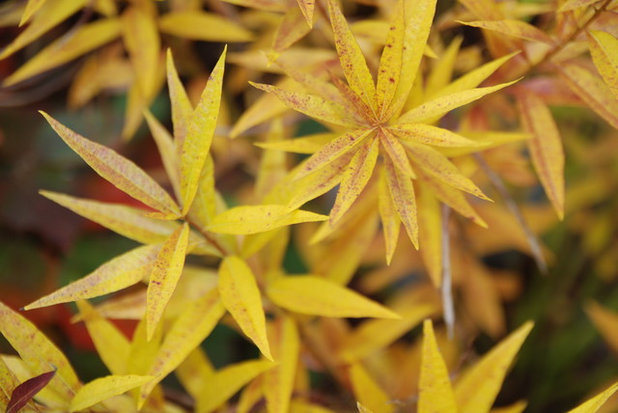
Paintbox Garden
Botanical name: Amsonia tabernaemontanaCommon names: Eastern bluestar, willow bluestar
Where it will grow: Hardy to -40 degrees Fahrenheit (USDA zones 3 to 9; find your zone)
Water requirement: Medium
Light requirement: Full sun to partial shade
Mature size: 2 to 3 feet tall and wide
Benefits and tolerances: Attracts butterflies and bees; tolerant of clay soils; deer resistant
Seasonal interest: Spring blooms; outstanding fall color
When to plant: Spring to fall
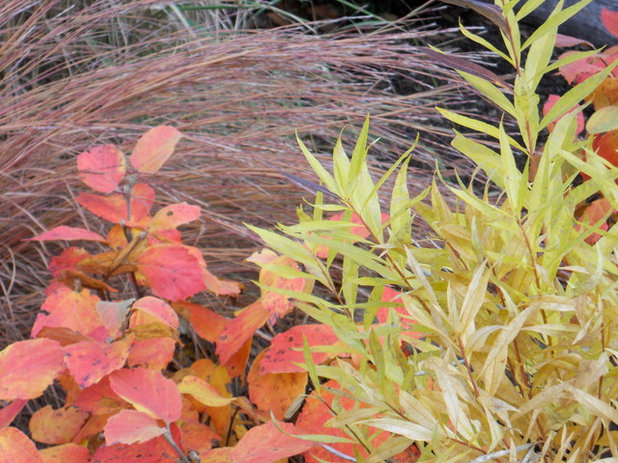
Paintbox Garden
Distinguishing traits. The chartreuse leaves make a great composition paired with fothergilla and ornamental grasses (shown here).
The leaves of eastern bluestar are much wider than those of willow bluestar (
Amsonia hubrichtii), which is a related species with a similar growth habit.
A. hubrichtii is another good choice for late-season color.
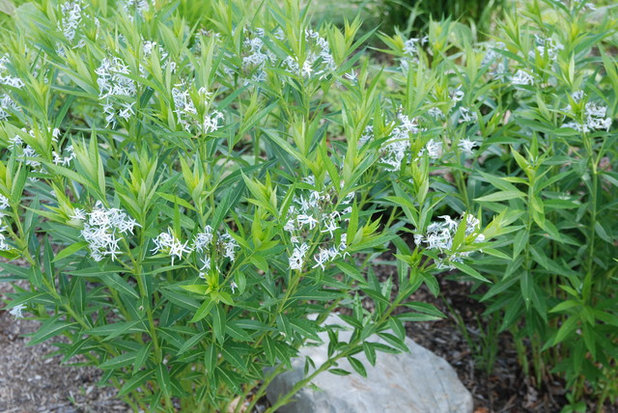
Paintbox Garden
Early summer brings a bounty of the tiny pale blue flowers that gave the plant its common name. The delicate, star-shaped blooms seem to fortify the honeybees in my area and are an important food source for other pollinators.
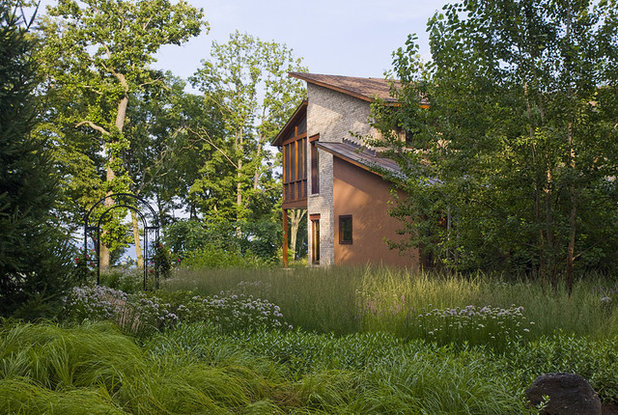
The Garden Consultants, Inc.
How to use it. Get rid of your lawn by replacing turf with swaths of low-maintenance plants like Amsonia and grasses. If you can't give up all of your lawn, at least reduce its size. The textural interplay of a carefully chosen palette of plants will appeal year-round.
For a naturalistic border, combine bluestar with asters, baptisia and
bluestem (
Schizachyrium scoparium), and plant masses of dwarf
Amsonia 'Blue Ice' as a ground cover.
Bluestar forms clumps and is an excellent choice for edging along pathways.
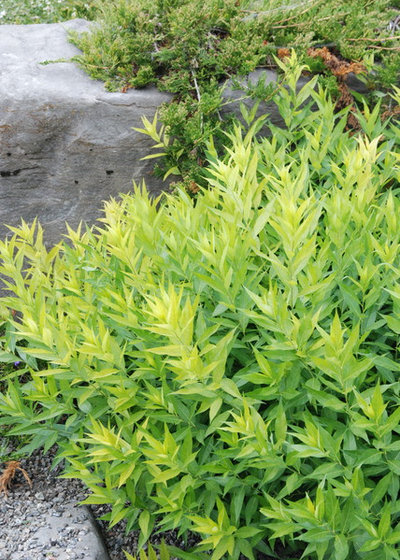
Paintbox Garden
Planting notes. Bluestar is resistant to diseases and pests, and holds up well in hot, dry climates and poor soils.
You should divide established clumps after five years — this is a good job to do in early spring. Shear the plants after flowering to maintain height (cut the top one-third with hedge trimmers).
These excellent cultivars offer more compact growth and darker flowers:
- 'Montana'
- 'Blue Ice'
- 'Short Stack'





